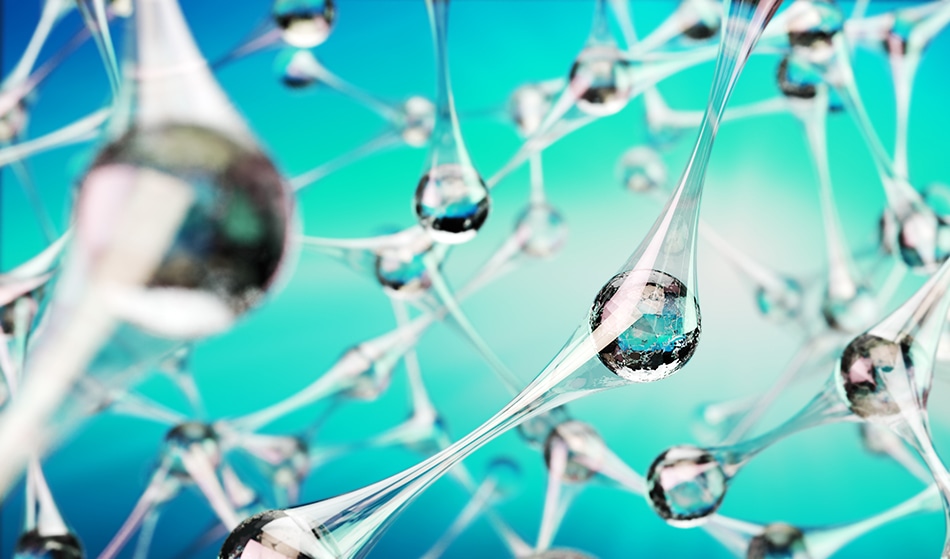 cybrain/shutterstock
cybrain/shutterstock
Scientists at Northwestern University have developed a technique to create new classes of optical materials. It has even been suggested that the new technique could be used to make the light bending and cloaking devices, popular in science fiction films and television shows, real. The study was published in Science earlier this month.
Using a new DNA programmable assembly technique combined with an older top down lithography fabrication technique, the team at Northwestern are the first to construct an optically active nanoparticle superlattice structure on a gold surface and achieve individual particle control in three dimensions. Structures with specific configurations could be programmed through choice of particle type, DNA-pattern and sequence, to exhibit almost any colour across the visible spectrum.
Architecture is everything when designing new materials, and we now have a new way to precisely control particle architectures over large areas.
Chad A. Mirkin - Professor of Chemistry, Northwestern University
Using a combination of numerical simulations and optical spectroscopy techniques, the team identified various nanoparticle superlattices that absorb specific wavelengths of visible light. The gold DNA-modified nanoparticles are positioned on a pre-patterned template that is made of complementary DNA. By adding multiple DNA-modified particles with DNA that is complementary to the subsequent layers, stacks can then be formed.
The new materials that they have created are also stimuli-responsive. When introduced to new environments of different solution concentrations, the team found that the DNA strands not only changed in length, but also changed in colour from black, to red, to green. The change of colour opened up possibilities of tunability for optical properties.
Our study achieves one of the highest tunability ranges achieved to date in optical metamaterials.
Koray Aydin, Assistant Professor of Electrical Engineering & Computer Science
Chemists and physicists will be able to use the powerful and flexible technique to build an almost infinite number of new structures, including the metamaterials that cannot be found in nature. These structures will have all sorts of interesting properties, and they will be able to be used for a wide range of applications, including sensors for medical and environmental uses.
The study describes exactly how you can organize the nanoparticles into two and three-dimensional structures. The lithography method drills holes that are one nanoparticle wide into a polymer resist. This creates a “landing pad” for the DNA modified nanoparticle components, which is essential for keeping the growing structures vertical. The nanoscopic landing pads are then modified with one sequence of DNA and the gold nanoparticles are modified with complementary DNA.
There is massive potential for further variations with the new technique, as not only can the complementary DNA be alternated, but the particles themselves can be different sizes and shapes; such as spheres, cubes and disks. Professor Aydin explained that their novel metamaterial platform is enabled by precise and extreme control of gold nanoparticle shape, size and spacing and could hold significant promise for next-generation optical metamaterials and metasurfaces.
This approach can be used to build periodic lattices from optically active particles, such as gold, silver and any other material that can be modified with DNA, with extraordinary nanoscale precision.
Chad A. Mirkin - Professor of Chemistry, Northwestern University
As well as Professor Mirkin and Professor Aydin’s teams at Northwestern university, the researchers collaborated with Profesor Vinayak P. Dravid, also at Northwestern University, to gain his expert knowledge in nanopatterning, advanced microscopy and characterization of soft, hard and hybrid nanostructures. Professor Dravid helped to design the lithography strategy and nanopatterning, as well as assisting with characterizing the new exotic structures. The success of the reported DNA programmable assembly required expertise with soft-hard materials and exquisite nanopatterning and lithographic capabilities, so that the team were able to achieve the requisite definition and spatial resolution across large areas of substrate.
Disclaimer: The views expressed here are those of the author expressed in their private capacity and do not necessarily represent the views of AZoM.com Limited T/A AZoNetwork the owner and operator of this website. This disclaimer forms part of the Terms and conditions of use of this website.